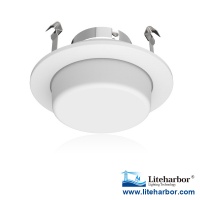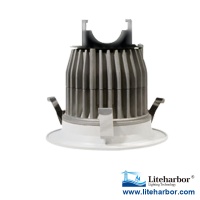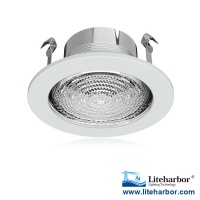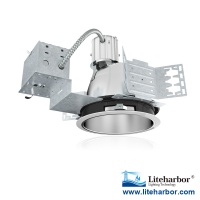How to Choose Under Cabinet Lights
How to Choose Under Cabinet Lights
Under cabinet lights are task lights special designed for kitchen. Under cabinet lights are idea for food preparation and cooking. Under cabinet lights illuminate the backsplash on your wall to creat beautiful accent lighting, under cabinets lighting can also be used as night lighting for your kitchen. Once you intall under cabinet lighting, you will never want to go back.
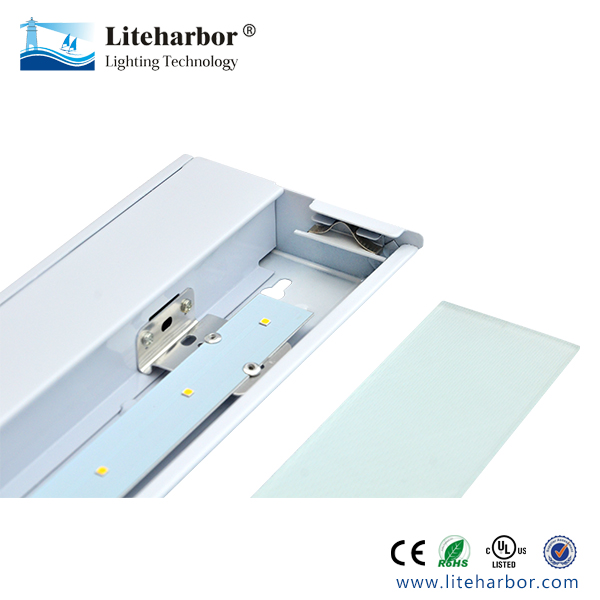
Step One
Think about following questions carefully
Fluorescent, Xenon, or LED?
Fluorescent are the most energy efficient in providing a given amount of light. More over fluorescent give off very little heat.. The disadvantage is that fluorescent cannot be dimmed. Fluorescent cabinet lights can be a wonderful, inexpensive option.
Xenon lights are not quite as energy efficient and do give off heat but they have full dimming capacity. Xenon cabinet lighting heat output can be an important consideration.
If you are looking for the most energy efficient option, go with LEDs. Most LEDs cannot be dimming but some with two levels of brightness which allows for some flexibility. LEDs cool to touch and will last for 50000 hours before needing replacement bulbs.
Puck or Linear
Linear under cabinet lights can provide uniform, well-distributed light for the entire countertop and eliminate shadows. While puck lights create pools of light in more focused areas.
Hardwire or Plug-in?
Lighting fixtures that are “hardwired” are connected directly to the power source using a ROMEX® wire (this is what is used behind your walls to wire your entire house). Plug-in under cabinet lights, require to plug in a cord to the nearest electrical outlet. Decide what your preference is for type of installation and placement – if there’s not a well-placed outlet in your kitchen, you’ll probably want to go with hardwire.
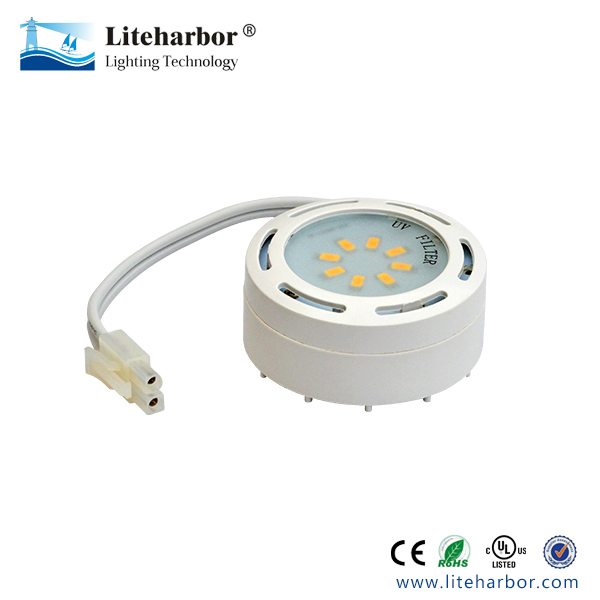
Design your under-cabinet lighting
Countertops
Countertops with a matte finish will produce a smoother lighting effect than those that are glossy, greatly reducing reflections. Light-colored surfaces will have a higher reflecctance, resulting in a brighter appearance, than dark-colored surfaces.
For glossy surfaces, reflections can be minimized by using a fixture that includes a lens over the light source, rather than having a bare bulb. Dark-colored counters and backsplashes may require fixtures that produce more lumens.
Lighting Color
Since people are working at the counter, colors and textures of foods and surfaces need to be well enhanced. The appropriate correlated color temperature or color appearance, depends on the decor and personal preference. For wood tones, warm-colored tiles, cooper-toned metal backsplashes or warm-toned walls, warm CCTs in the 2700-3500K range are appropriate. For decorative glass tiles, glass shelves, cool-toned tiles or gray-toned metal colors, cool CCTs in the 3500-5000K range are appropriate.
When trying to match lamps for the same color, it is best to choose lamps from the same manufacturer. Because CCT is not the primary determiant of the lamp’s color, two lamps with the same CCT will not necessarily be the same color.
Brightness and Glare
Under-cabinet lighting should not be glaring to anyone, especially someone in a seated position elsewhere in the room. Fixtures mounted under the cabinets should be well shielded; if the cabinet does not provide enough of a recess to conceal the fixture, a piece of trim molding approximately 1 inch wide should added to the bottom of the cabinet. Installation toward the front of the cabinet or shelf with the light source facing the back is generally recommended. This produces the most even light distribution on both the countertop and the backsplash. This location is also useful in reducing the potential for direct view of the light source, typically resulting in the least glare.
Dimming Capability
The ability to control the brightness of the under-cabinet lighting adds greatly to its value. The tasks being carried out and their difficulty will dictate the light level required. People of different ages with different visual needs performing various tasks will use this space, so flexibility could offer benefits. Incandescent and LED lighting can be dimmed easily, but having this feature may add to the fixture cost. Dimming fluorescent lighting is costlier than dimming incandescent lighting because of the type of dimming components required.
Fixture Fit
For linear under-cabinet lighting, matching the length of the fixture as closely as possible to the size of the cabinet or shell will result in the best uniformity and minimize dark spots and shadows between the fixtures. Being able to connect fixtures as close together as possible between cabinets, whether by routing through the cabinet stiles to enable snapping fixtures together, or by using interconnect cords as unobtrusively as possible, will also result in fewer shadows.
Fixture Lenses
Lenses help diffuse the light provided by the fixture and produce a more uniform appearance on the counter. In the case of halogen or xenon fixtures especially, a lens will help minimize reflections on the countertop. Lenses will also reduce the light intensity to a degree. Lenses can reduce the multiple shadows cast by fixtures with many light sources, especially ones with high-power LEDs.
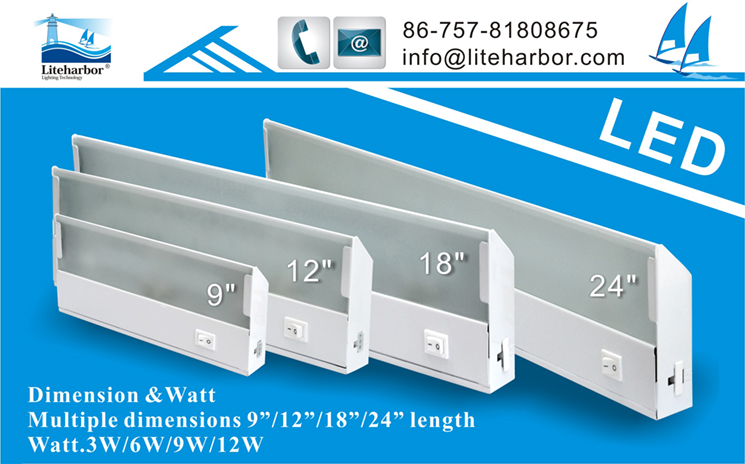
Think about your home situations then make your own decisions your kitchen will be a wonderful place!

 RESOURCE
RESOURCE



